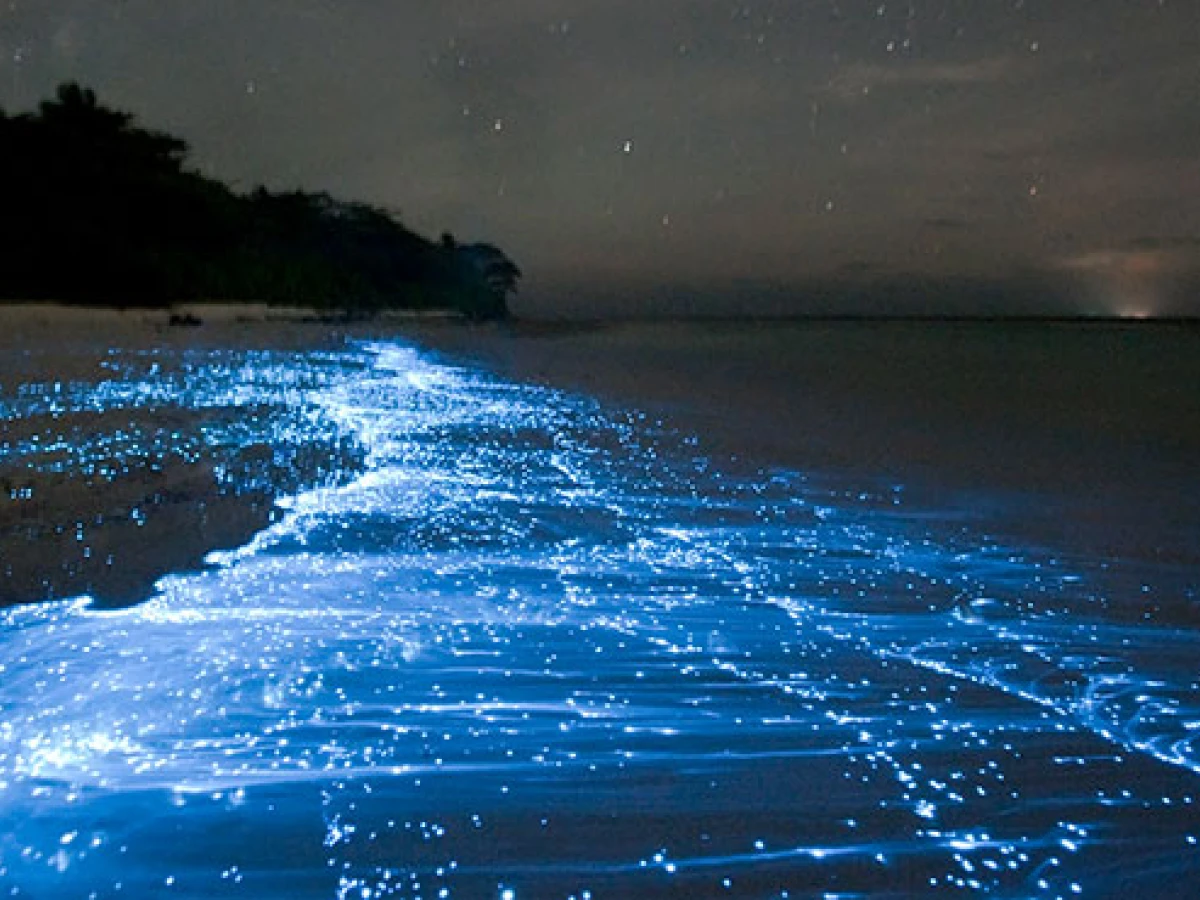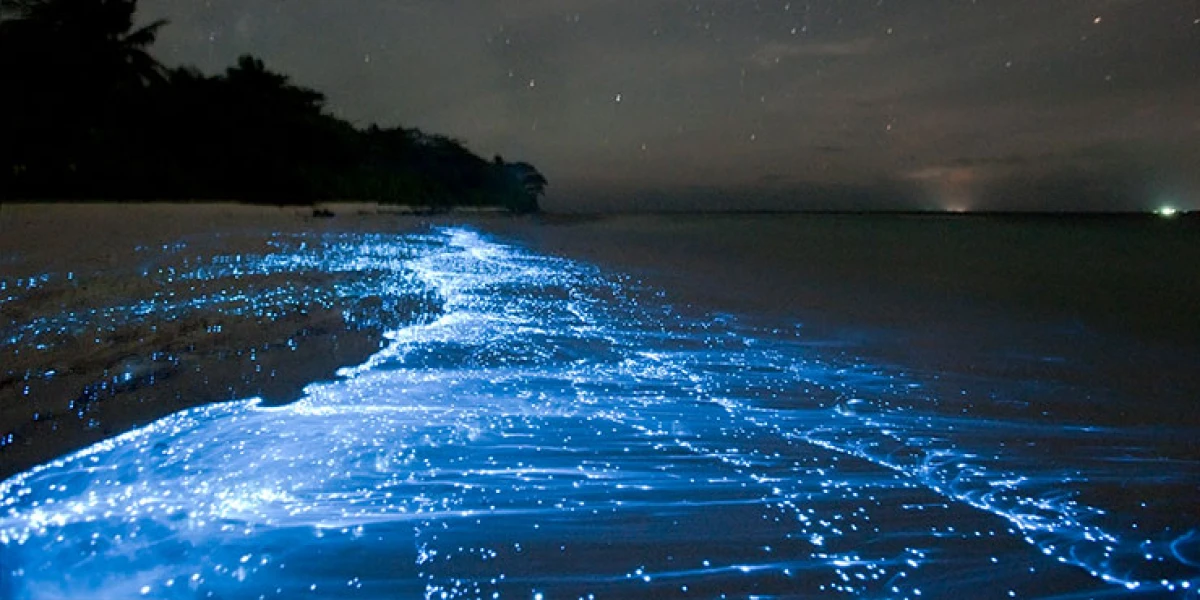
Bioluminescence back in Maldives; lights up northern shores
This natural phenomenon is currently being witnessed in several islands of Thiladhunmathi Atoll.
By
Aminath Shifleen
"So heartening," Sobah had exclaimed.
"You won't get tired of seeing the beach of the island light up in blue at night."
The north-western beach of Ihavandhoo has been having these neon shows since last week. In the evening, the darkness of the night reveals them, and the beauty remains until an hour to midnight.
The island council reports that a large number of residents gather at the beach every night to see the bioluminescence. More than 200-300 people gathered every night.
When the bioluminescence is filmed and released on social media, it is mesmerising; it shows the beach lit up in neon blue with every glittering wave that washes in. Some people even play with the bioluminescence in the sand, making patterns and designs using the beautiful blue medium.
This natural phenomenon is currently being witnessed in several islands of Thiladhunmathi Atoll, including Ihavandhoo. Thakandhoo, Vashafaru, Kulhudhuffushi, Makunudhoo and nearby resorts will also be able to see the sight at night.
Children and people of all ages gather at night to see the bioluminescence. They make videos and take pictures and send them to friends and relatives everywhere.
"I don't remember seeing this on our islands for a long time now. It is so amazing to see, right?" said a man at the beach of Kulhudhuffushi with his 7-year-old son.

Haa Alifu Atoll Ihavandhoo Council President Ahmed Sobah has never before seen bioluminescence with his own eyes; the bioluminescent algae that whales love and washes on the Maldivian shores at different times, in different parts. After wishing for a long time, seeing the algae light up the beach of Ihavandhoo gave him a strange kind of happiness.
Sign of monsoon change?
Scientifically known as bioluminescent phytoplankton, organisms so small that they cannot be seen to the naked eye if not for their brilliant glow. According to some islanders, the algae is a sign of changing monsoons, changing northeast winds, according to the local term, ‘Iruvai’.
However, according to the data at the Marine Research Centre, this is not a phenomenon related to a particular monsoon. The recorded highest number of bioluminescence sightings are in November and December every year.
November-December hails the main monsoonal change in the Maldives, where the rainy season transits with the sunny one. North-eastern monsoon usually begins in January.
"We haven't found this phenomenon to indicate a particular weather condition yet. While we normally see the algae wash up at the very end of the year, we are now seeing it early too," said marine biologist Fathimath Hana Amir.
On some islands, the algae are seen in larger amounts than the others, and they glow for an unusually long time too. Foreign experts who have studied the phenomenon had speculated that the planktons were an uncommon species.
On the other hand, Hana reports that the samples taken from last year's bioluminescence period did not show anything usual. She added, “Still, we are looking into this further”.
The mesmerising sight of bioluminescence was last seen in 2021 on Hulhumale beach, and a lot of people came down to the beach, even from Male to experience it last year.




